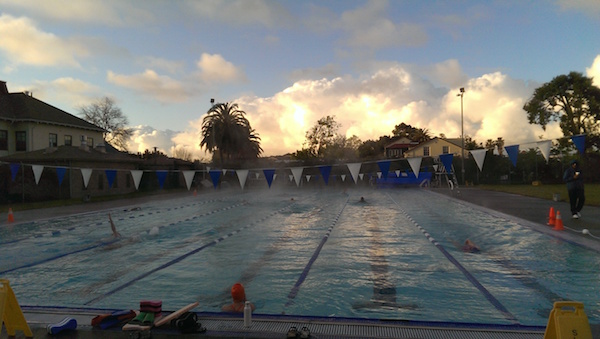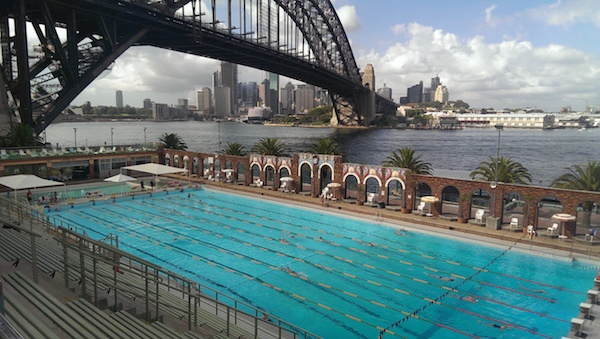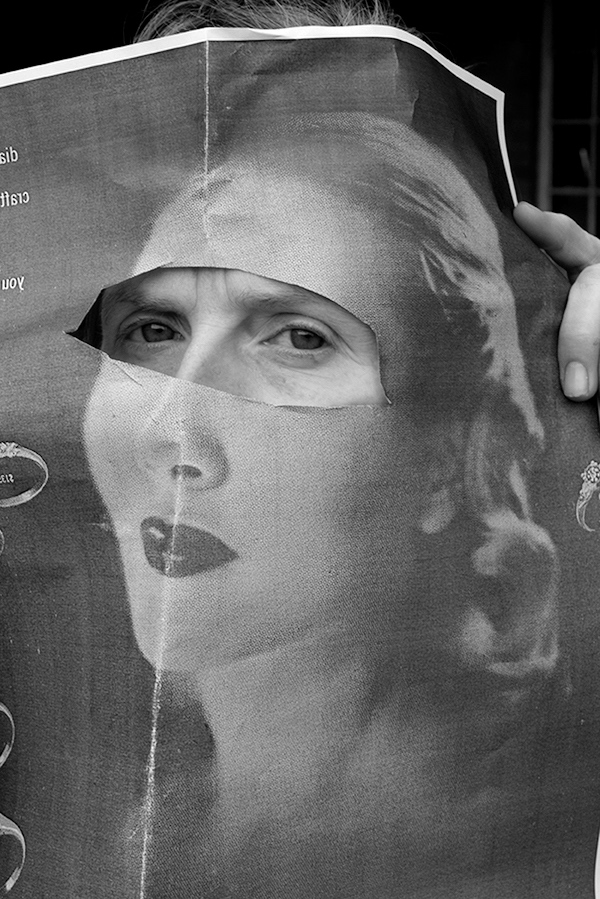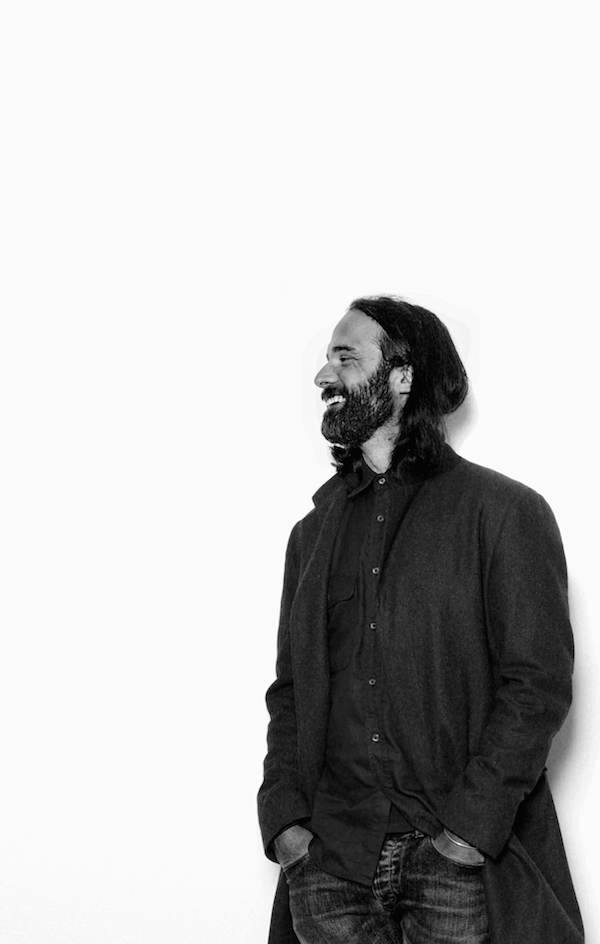PLAY x PLAY: Tom Di Maria
Play by Play is an ongoing series in which we invite a variety of creative minds to explore the importance of play.
Discover how engaging their physical selves helps them to stimulate their creativity while also liberating them from the often stressful and sedentary confines of our technologically dominated era. We hope this series will motivate you to take regular tech breaks and make time to play everyday. It’s good for your physical health and crucial for your imagination.
TOM DI MARIA is the Director of the Creative Growth Art Center in Oakland, California. He is the former Assistant Director of the Berkeley Art Museum/Pacific Film Archive, at UC Berkeley. Tom was also the Executive Director of the San Francisco Lesbian and Gay Film Festival, and Director of Development and Marketing at the San Francisco International Film Festival. Tom is also an award-winning filmmaker, with awards from Sundance, Black Maria, Sinking Creek, National Educational Media, and New York Experimental film festivals.
The Art of Swimming
It’s not easy to use an i-pad or a smart phone underwater. That’s one of the many pleasures of the pool.
Maybe you can recall the sound of an airplane door shutting as you settled into your seat. It used to mean a few hours unplugged…with a newspaper or a book, or time to think creatively. While those times are long gone on planes, they still exist underwater.
It’s a personal solace, swimming. Laps and blue and morning air. A transformation really, from the heavy gravity of the world to a place of refuge from the daily concerns of mind and body.
I travel extensively. As the world becomes too globalized, and one city blends seamlessly into the next city’s airport, I still seek connection and culture. Swimming, as isolated as it can be, offers me that. I strive to swim as often as possible in public pools in cities and countries around the world. It tells me about the social fabric, introduces me to local people, it becomes a ritual. It is the string that runs through my life.
A small pool in Burma stuns due to its modern infinity edge that allows for an unobstructed view of the Buddhist temples of Bagan. In a village where I rode a horse-cart to the airport, this is an unexpected pleasure.
While updating my travel vaccines, my doctor advises me not to swim in India. To not risk ingesting the water. But the pool in Delhi entices and then refreshes, and swimming with local families remains a memory that endures longer than the Taj Mahal.
A river near Kampot, Cambodia, swirls into a deep swimming hole. Nearby, people collect small shells and fashion them into jewelry and animal figures (a rooster with a big nose!) that they hand over for me to see. That experience still resides in the recesses of my mind.
On a blazing hot day in Singapore, the water heats you up, more than cools you down, yet somehow offers a temporary escape from the pressing humidity.
Morning laps with a University swim team in Seoul was a happy accident. Smelling the pool, I wound my way through the labyrinthine corridors of an old athletic building. A single student sat at the front desk. “Can I swim?” I asked. “No, University only,” he replied in halting English. Explaining that I was on campus to give a lecture in the art department, the pool became open to me.
One of the unknown free pleasures for visitors to Hawaii are the public pools. These tourist free havens offer beautiful lap lanes and the unexpected pleasure of local parties by the keiki pool. Families gather for a child’s birthday, or to pass a slow afternoon after work or the school day. These moments seem timeless in their ritual.
There are occasions when being one of the few people in the art world without a tattoo comes in handy too. In Japan, for instance, where tattoos are forbidden in the pool. So are watches, but at least you can take your timepiece off.
Have you seen the famous photos of people playing chess in the water in Budapest? The water is warmer than you might want for a workout. But a similar pool not too far way is good for laps, and offers the faded-glory splendor of another era.
Paris has its own pool culture too. Even with a shaved head, I have to wear a swim cap before entering the lane. I have witnessed a lifeguard with a tape measure take to the inside seam of a friend’s swim trunks to make sure they were not longer than what the regulation allows. Remember that in Paris, it’s always about what you wear.
But set aside culture. In the end, it’s just the water and me.
It transforms your being. The morning chill. The sense of being outside the container of your body. And the world is upside down. Underwater looking up, the surface of the pool seen from below becomes ceiling and floor, sky and ground. My mind is free there.
Counting the laps becomes my mantra. The closest I get to yoga or meditation. Free from the constant clicking and pinging of what the rest of the day will bring…I become a body and mind full of the richness of the moment. Entering the pool is a transformation really – from one reality to another.
I work with artists with disabilities. I see how their journey to creativity is formed. When one path is blocked, others open up and strengthen. It has made me realize how complacent we can become in the use and appreciation of all of our senses. How easy to let them atrophy, or allow them to become just a part of the background noise of our journey.
Swimming makes me aware of all my senses. Last week it was the smell of the springtime jasmine that blossomed around the outdoor pubic pool in Oakland, California where I swim most mornings.
That same morning, the visual transition from a sky that was dark, as it became slate grey, then sunrise red, was cinematic. The underwater blue as I dive under, then crest above, a cooling contrast.
The sound. At first, plunging under water is isolatingly silent, but it soon becomes full of the rich acoustics of rushing water. The gurgling sensation of being back in the womb offers the possibility that the rest of the day can become a new beginning.
The taste of the somewhat salty, somewhat chlorinated water is like no other. Tasting slightly of the sea, yet unmistakable in its chemical profile, it is a flashback to summers at the beach, or vacationing in overly chemically hotel pools. The way smell collides with the power of memory always surprises.
Plus the sensation on my skin. Like one big kiss all over the body, my skin is rubbed and caressed by the water as it skims over me.
Recently, I was on a panel about the tactile nature of creativity, and a researcher was discussing touch as part of the creative act. She discussed how research shows that touching the body, stroking the skin, rubbing and patting, moving materials through the hands, all heighten our awareness of self and offer creative stimulation. And I thought “that’s the compelling part of swimming!” The movement of the water over skin. It’s a creative act.
Very few moments in life engage me this way. It’s interesting how this lone experience lets me view the world in a new way, serves as a pathway to seeing things from a new perspective, and lets me think about what it means to be alive in the world. It’s transformative. But after all, isn’t that what most art is really all about?
TdM 2015
Published: April 9th, 2015







